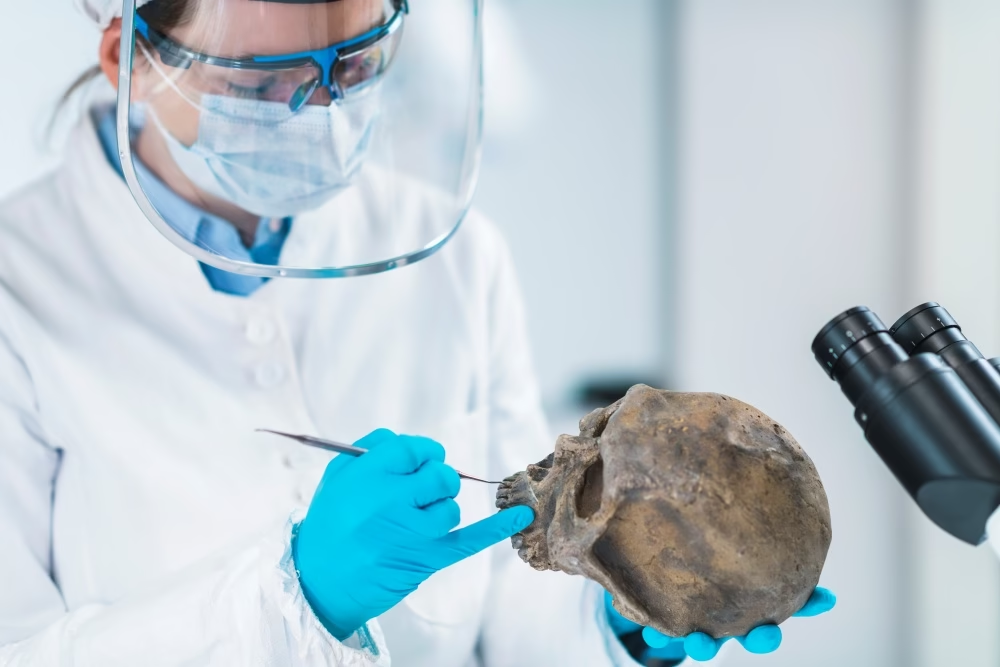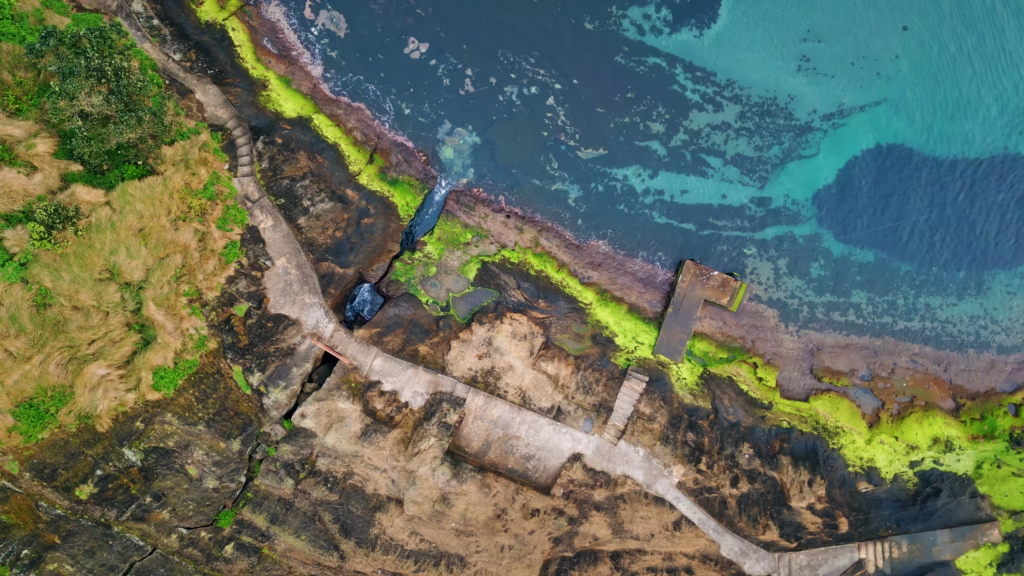When dredging crews working on a routine port expansion project in Indonesia’s Madura Strait pulled up chunks of cemented sand from the seafloor, they unknowingly unlocked one of archaeology’s most closely guarded secrets. Hidden within those unremarkable sediment blocks lay the answers to questions scientists have been asking for decades about early human life in Southeast Asia.
The Sundaland hominin fossil site discovery has revealed its first secrets: two skull fragments designated Madura Strait 1 (MS1) and Madura Strait 2 (MS2), representing Homo erectus individuals who lived approximately 140,000 years ago. But these ancient bones are merely the beginning of a treasure trove of secrets waiting to be decoded from the legendary lost continent of Sundaland.
The First Secret Unlocked: An Accidental Time Machine
The secret to this remarkable find lay in an unlikely source. Construction crews extracting cemented sand for a landfill project at Surabaya port unknowingly accessed an underwater archive that traditional archaeology could never reach. What started as industrial dredging became the key to unlocking the most significant paleontological secrets in Southeast Asian history.
It was not what we discovered, it was where we discovered it that was the biggest secret, says Dr. Berghuis. And here we found throughout traces of ancient human settlement in the material that would form the backbone of modern infrastructure. The past was literally helping us into our future and, we nearly lost it altogether.

A Window Into the Lost World of Sundaland
To understand the significance of this discovery, imagine Southeast Asia 140,000 years ago. Sea levels were dramatically lower—approximately 400 feet below today’s levels. What we now know as separate islands were connected by vast expanses of land called Sundaland, stretching from modern-day Thailand through Malaysia, Indonesia, and beyond.
The dig eventually salvaged more than 6,700 vertebrate fossils of at least 36 different species, a picture of a prolific ecosystem in which early humans coexisted with various wildlife. This was not a barren land because it was a biological paradise and was full of life.
The amount of fossil data indicates that these populations of Homo erectus were not merely surviving; they were actively hunting and evolving to fit their environment. The animal life in the area consisted of animals that would have necessitated complex hunting techniques, meaning that these early humans must have already developed an advanced behavioral set.
Secret #3: Precision Dating Reveals Hidden Timeline
The Sundaland hominin fossil site discovery holds another important secret: accurate time marks that rewrite the history of human presence in the area. With optically stimulated luminescence (OSL) dating, researchers uncovered the secret ages of these ancient remains, 162 ± 31 and 119 ± 27 thousand years ago.
Dr. Berghuis reveals the significance of this secret: “Most Homo erectus discoveries give us isolated glimpses of early human life. Here, we have an entire ecosystem frozen in time, showing us exactly how these early humans fit into their world. The secret isn’t just that they lived here—it’s how successfully they lived here.”
It was far better preserved than anyone could have imagined, and in fact it contained secrets that other archeological sites could not uncover. These fossils, in contrast to scattered and damaged bones elsewhere, had sufficient detail that allowed researchers to unlock confident species identifications and behavioral insights that otherwise could be difficult to acquire.
FAQs About the Sundaland Hominin Fossil Site Discovery Secrets
What secret makes this the first hominin discovery from submerged Sundaland?
The secret lies in accessibility. Until now, the technical challenges and vast area of the world’s largest shelf sea kept these archaeological treasures locked away. This accidental discovery during construction work finally provided the key to unlock secrets that traditional archaeology couldn’t access.
How do scientists know the secret identity of these fossils as Homo erectus?
Researchers unlocked this secret through careful morphological comparison with known Homo erectus specimens. The skull fragments revealed distinctive characteristics that confirmed their species identification with confidence.
What migration secrets does this discovery reveal about early humans?
The Sundaland hominin fossil site discovery holds secrets about sophisticated migration capabilities. It confirms that Homo erectus populations successfully established themselves across the entire Sundaland region, revealing maritime and land-based movement strategies more advanced than previously understood.

Secret Keepers: The Public Guardians of Ancient Mysteries
These mysteries of the Sundaland hominin fossil find site can now be experienced by visitors to the Geological Museum in Bandung, Indonesia who are now able to see the complete collection in person. Museum director Dr. Sari Wijaya can tell us, we have had researchers on six continents who have asked to study these specimens. It has all happened almost overnight It has become our most demanded line everybody wants to see what more we have to reveal.
The discovery’s secrets have rippled far beyond academic circles. Local fishing communities near the site report increased interest from international research teams, bringing unexpected economic benefits to the region. “My grandfather always said these waters held ancient secrets,” shares local fisherman Budi Santoso. “Now scientists from America and Europe are proving him right. The sea has finally revealed what it was hiding all along.”
More Secrets Waiting to Be Unlocked
The Sundaland hominin fossil site discovery is only the first key to a great vault of ancient secrets. The Madura Strait discovery has triggered renewed interest in underwater archeology across Southeast Asia, and research teams are now considering systematically surveying other submerged river valleys that might hold more information about human evolution.
Each future dive could unlock secrets that have remained hidden beneath the waves for millennia. The story of Sundaland reminds us that our planet’s greatest archaeological secrets aren’t limited to dry land—they lie waiting in the depths, protected by hundreds of feet of ocean water.
These 140,000-year-old skull fragments, as of today, are the very first messengers of a secret world, who murmur about some ancient mysteries as to the ancestors who once walked on the land now submerged by the sea. Their testimony of silence contains evidence that the mysteries of human plasticity and strength go back to the depths of time, far beyond what we ever suspected. The discovery of the Sundaland hominin fossil location has opened the door to these secrets, but there are countless more mysteries still behind lock and key waiting to be unlocked by the next accidental key.



